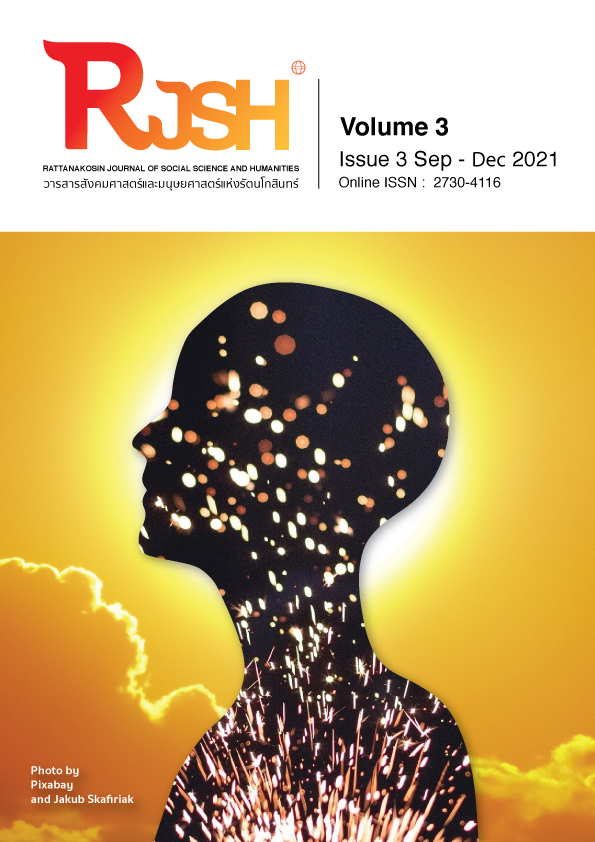กฎหมายกับการมีส่วนร่วมของชุมชนเพื่อการพัฒนาแร่ทองคำในพื้นที่ บางสะพานให้เป็นสิ่งบ่งชี้ทางภูมิศาสตร์
Main Article Content
บทคัดย่อ
การวิจัยครั้งนี้มีวัตถุประสงค์เพื่อ 1) ศึกษาความเป็นมาและการบังคับใช้พระราชบัญญัติสิ่งบ่งชี้ทางภูมิศาสตร์ เพื่อประโยชน์ในการคุ้มครองสินค้าหรือผลิตภัณฑ์ที่ทำจากแร่ทองคำบางสะพาน 2) ศึกษาความต้องการและผลกระทบที่มีต่อวิถีชุมชนในการพัฒนาแร่ทองคำให้เป็นสิ่งบ่งชี้ทางภูมิศาสตร์เพื่อให้ชุมชนมีส่วนร่วมในการกำหนดความต้องการของตนเองอย่างแท้จริง 3) วิเคราะห์ปัญหาและอุปสรรคในการขอขึ้นทะเบียนที่เกี่ยวข้องกับผลิตภัณฑ์ที่ทำจากแร่ทองคำบางสะพาน
ผลการวิจัย พบว่า 1) แร่ทองคำบางสะพาน มีลักษณะของสิ่งบ่งชี้ทางภูมิศาสตร์ตามมาตรา 3 พระราชบัญญัติคุ้มครองสิ่งบ่งชี้ทางภูมิศาสตร์ และใช้คุ้มครองผลิตภัณฑ์ที่ทำจากแร่ทองคำได้ เพราะมีความเชื่อมโยงด้านคุณภาพ ชื่อเสียง คุณลักษณะเฉพาะที่มีความสัมพันธ์กับท้องถิ่นหรือสถานที่ภูมิศาสตร์ตามคำขอขึ้นทะเบียน 2) ชาวบ้านส่วนใหญ่มีความภูมิใจในทองคำบางสะพาน เพราะเป็นสิ่งเชิดหน้าชูตาสร้างความภูมิฐานให้แก่ผู้เป็นเจ้าของ แต่จากการสำรวจมีปริมาณไม่เพียงพอที่จะประกอบเป็นอุตสาหกรรมเหมืองแร่ ทางจังหวัดจึงตั้งแสดงไว้ในพิพิธภัณฑ์เพื่อให้ผู้สนใจได้ชม “ทองนพคุณ” อันล้ำค่า 3) ปัญหาและอุปสรรคในการขอขึ้นทะเบียน คือ ผู้ดำเนินการขอขึ้นทะเบียนสิ่งบ่งชี้ทางภูมิศาสตร์ไม่สามารถทำเองได้ หากขาดความช่วยเหลือจากองค์กรอื่นๆ โดยเฉพาะอย่างยิ่งจากหน่วยงานราชการ
Article Details
ข้อความภายในบทความที่ตีพิมพ์ในวารสารทั้งหมด รวมถึงรูปภาพประกอบ ตาราง เป็นลิขสิทธิ์ของมหาวิทยาลัยเทคโนโลยีราชมงคลรัตนโกสินทร์ การนำเนื้อหา ข้อความหรือข้อคิดเห็น รูปภาพ ตาราง ของบทความไปจัดพิมพ์เผยแพร่ในรูปแบบต่าง ๆ เพื่อใช้ประโยชน์ในเชิงพาณิชย์ ต้องได้รับอนุญาตจากกองบรรณาธิการวารสารอย่างเป็นลายลักษณ์อักษร
มหาวิทยาลัยฯ อนุญาตให้สามารถนำไฟล์บทความไปใช้ประโยชน์และเผยแพร่ต่อได้ โดยต้องแสดงที่มาจากวารสารและไม่ใช้เพื่อการค้า
ข้อความที่ปรากฏในบทความในวารสารเป็นความคิดเห็นส่วนตัวของผู้เขียนแต่ละท่านไม่เกี่ยวข้องกับราชวิทยาลัยจุฬาภรณ์ และบุคลากร คณาจารย์ท่านอื่น ๆ ในมหาวิทยาลัยฯแต่อย่างใด ความรับผิดชอบองค์ประกอบทั้งหมดของบทความแต่ละเรื่องเป็นของผู้เขียนแต่ละท่าน หากมีความผิดพลาดใด ๆ ผู้เขียนแต่ละท่านจะรับผิดชอบบทความของตนเอง ตลอดจนความรับผิดชอบด้านเนื้อหาและการตรวจร่างบทความเป็นของผู้เขียน ไม่เกี่ยวข้องกับกองบรรณาธิการ
เอกสารอ้างอิง
กรมทรัพย์สินทางปัญญา กระทรวงพาณิชย์. (2550). คู่มือการขึ้นทะเบียนสิ่งบ่งชี้ทางภูมิศาสตร์. กรุงเทพฯ: อักษรไทย.
จักรกฤษณ์ ควรพจน์ และบัณฑูร เศรษฐศิโรตม์. (2556). สิ่งบ่งชี้ทางภูมิศาสตร์ทรัพย์สินทางปัญหาและสิทธิชุมชน. กรุงเทพมหานคร: นิติธรรม.
ถวิลวดี บุรีกุล. (2548). การมีส่วนร่วม : แนวคิด ทฤษฎีและกะบวนการ. กรุงเทพฯ : สถาบันพระปกเกล้า.
ทวีพฤทธิ์ ศิริศักดิ์บรรจง. (2559). มาตรการกฎหมายสิ่งบ่งชี้ทางภูมิศาสตร์เพื่อปกป้องภูมิปัญญาท้องถิ่น: ศึกษากรณีสินค้าอาหารไทย. กรุงเทพมหานคร: สำนักงานเลขาธิการสภาผู้แทนราษฎร.
ธนพจน์ เอกโยคยะ. (2547). คำอธิบายกฎหมายสิ่งบ่งชี้ทางภูมิศาสตร์. กรุงเทพฯ: วิญญูชน.
ปัจฉิมา ธนสันติ. (2554). กฎหมายคุ้มครองสิ่งบ่งชี้ทางภูมิศาสตร์: ตำรากฎหมายทรัพย์สินทางปัญญา. กรุงเทพมหานคร: สำนักอบรมศึกษากฎหมายแห่งเนติบัณฑิตยสภา.
รังสรรค์ ธนะพรพันธุ์ และ สมบูรณ์ ศิริประชัย. (2552). กฎกติกา WTO เล่มที่ห้า: ทรัพย์สินทางปัญญา. กรุงเทพฯ: สามลดา.
Agreement on Trade-Related Aspects of Intellectual Property Rights: Trips Council Regulation (EC) NO. 1151/2012 on the protection of geographical indications and designations of origin for agricultural products and foodstuffs.
Commission of the European Communities. Geographical Indications and TRIPs: 10 Years Later. A Roadmap for EU GI Holders to Get Protection in Other WTO.
Geiger, C. (2013). Constructing European Intellectual Property: Achievements and New Perspectives. Edward Elgar: Publishing Limited.
Dutfield, G. (2001). TRIPS-Related Aspects of Traditional Knowledge. The Agreement on Trade-Related Aspects of Intellectual Property Rights (TRIPS).


